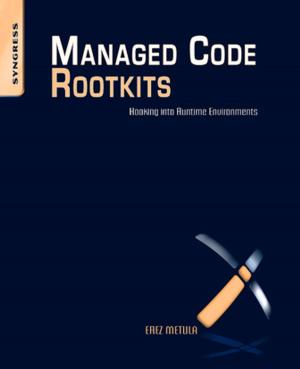Rules of Thumb for Chemical Engineers
Nonfiction, Science & Nature, Science, Chemistry, Technical & Industrial, Technology, Engineering| Author: | Stephen M Hall | ISBN: | 9780123877895 |
| Publisher: | Elsevier Science | Publication: | July 27, 2012 |
| Imprint: | Butterworth-Heinemann | Language: | English |
| Author: | Stephen M Hall |
| ISBN: | 9780123877895 |
| Publisher: | Elsevier Science |
| Publication: | July 27, 2012 |
| Imprint: | Butterworth-Heinemann |
| Language: | English |
Rules of Thumb for Chemical Engineers, Fifth Edition, provides solutions, common sense techniques, shortcuts, and calculations to help chemical and process engineers deal with practical on-the-job problems. It discusses physical properties for proprietary materials, pharmaceutical and biopharmaceutical sector heuristics, and process design, along with closed-loop heat transfer systems, heat exchangers, packed columns, and structured packings.
Organized into 27 chapters, the book begins with an overview of formulae and data for sizing piping systems for incompressible and compressible flow. It then moves to a discussion of design recommendations for heat exchangers, practical equations for solving fractionation problems, along with design of reactive absorption processes. It also considers different types of pumps and presents narrative as well as tabular comparisons and application notes for various types of fans, blowers, and compressors. The book also walks the reader through the general rules of thumb for vessels, how cooling towers are sized based on parameters such as return temperature and supply temperature, and specifications of refrigeration systems. Other chapters focus on pneumatic conveying, blending and agitation, energy conservation, and process modeling. Online calculation tools, Excel workbooks, guidelines for hazardous materials and processes, and a searchable Rules of Thumb library are included.
Chemical engineers faced with fluid flow problems will find this book extremely useful.
- Rules of Thumb for Chemical Engineers brings together solutions, information and work-arounds that engineers in the process industry need to get their job done.
- New material in the Fifth Edition includes physical properties for proprietary materials, six new chapters, including pharmaceutical, biopharmaceutical sector heuristics, process design with simulation software, and guidelines for hazardous materials and processes
- Now includes SI units throughout alongside imperial, and now accompanied by online calculation tools and a searchable Rules of Thumb library
Rules of Thumb for Chemical Engineers, Fifth Edition, provides solutions, common sense techniques, shortcuts, and calculations to help chemical and process engineers deal with practical on-the-job problems. It discusses physical properties for proprietary materials, pharmaceutical and biopharmaceutical sector heuristics, and process design, along with closed-loop heat transfer systems, heat exchangers, packed columns, and structured packings.
Organized into 27 chapters, the book begins with an overview of formulae and data for sizing piping systems for incompressible and compressible flow. It then moves to a discussion of design recommendations for heat exchangers, practical equations for solving fractionation problems, along with design of reactive absorption processes. It also considers different types of pumps and presents narrative as well as tabular comparisons and application notes for various types of fans, blowers, and compressors. The book also walks the reader through the general rules of thumb for vessels, how cooling towers are sized based on parameters such as return temperature and supply temperature, and specifications of refrigeration systems. Other chapters focus on pneumatic conveying, blending and agitation, energy conservation, and process modeling. Online calculation tools, Excel workbooks, guidelines for hazardous materials and processes, and a searchable Rules of Thumb library are included.
Chemical engineers faced with fluid flow problems will find this book extremely useful.
- Rules of Thumb for Chemical Engineers brings together solutions, information and work-arounds that engineers in the process industry need to get their job done.
- New material in the Fifth Edition includes physical properties for proprietary materials, six new chapters, including pharmaceutical, biopharmaceutical sector heuristics, process design with simulation software, and guidelines for hazardous materials and processes
- Now includes SI units throughout alongside imperial, and now accompanied by online calculation tools and a searchable Rules of Thumb library















